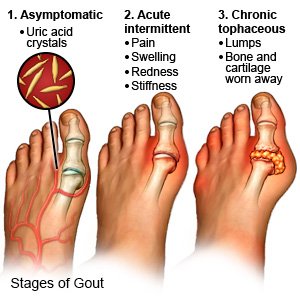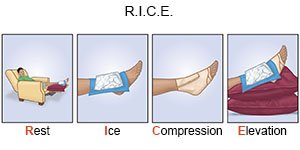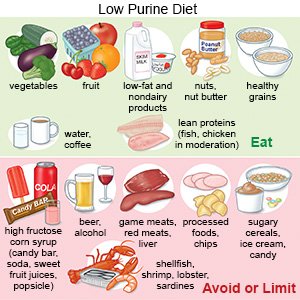Gout
Medically reviewed by Drugs.com. Last updated on Aug 4, 2025.
Gout is a form of arthritis that causes severe joint pain, redness, swelling, and stiffness. Acute gout pain starts suddenly, gets worse quickly, and stops on its own. Acute gout can become chronic and cause permanent damage to the joints.
 |
DISCHARGE INSTRUCTIONS:
Return to the emergency department if:
- You have severe pain in one or more of your joints that you cannot tolerate.
- You have a fever or redness that spreads beyond the joint area.
Call your doctor if:
- You have new symptoms, such as a rash, after you start gout treatment.
- Your joint pain and swelling do not go away, even after treatment.
- You are not urinating as much or as often as you usually do.
- You have trouble taking your gout medicines.
- You have questions or concerns about your condition or care.
Related medications
Treatment options
The following list of medications are related to or used in the treatment of this condition.
Medicines:
You may need any of the following:
- Prescription pain medicine may be given. Ask your healthcare provider how to take this medicine safely. Some prescription pain medicines contain acetaminophen. Do not take other medicines that contain acetaminophen without talking to your healthcare provider. Too much acetaminophen may cause liver damage. Prescription pain medicine may cause constipation. Ask your healthcare provider how to prevent or treat constipation.
- NSAIDs , such as ibuprofen, help decrease swelling, pain, and fever. This medicine is available with or without a doctor's order. NSAIDs can cause stomach bleeding or kidney problems in certain people. If you take blood thinner medicine, always ask your healthcare provider if NSAIDs are safe for you. Always read the medicine label and follow directions.
- Gout medicine decreases joint pain and swelling. It may also be given to prevent new gout attacks.
- Steroids reduce inflammation and can help your joint stiffness and pain during gout attacks.
- Uric acid medicine may be given to reduce the amount of uric acid your body makes. Some medicines may help you pass more uric acid when you urinate.
- Take your medicine as directed. Contact your healthcare provider if you think your medicine is not helping or if you have side effects. Tell your provider if you are allergic to any medicine. Keep a list of the medicines, vitamins, and herbs you take. Include the amounts, and when and why you take them. Bring the list or the pill bottles to follow-up visits. Carry your medicine list with you in case of an emergency.
Manage your symptoms:
 |
- Rest your painful joint so it can heal. Your healthcare provider may recommend crutches or a walker if the affected joint is in a leg.
- Apply ice to your joint. Ice decreases pain and swelling. Use an ice pack, or put crushed ice in a plastic bag. Cover the ice pack or bag with a towel before you apply it to your painful joint. Apply ice for 15 to 20 minutes every hour, or as directed.
- Elevate your joint. Elevation helps reduce swelling and pain. Raise your joint above the level of your heart as often as you can. Prop your painful joint on pillows to keep it above your heart comfortably.
- Go to physical therapy if directed. A physical therapist can teach you exercises to improve flexibility and range of motion.
Help prevent gout attacks:
- Do not eat high-purine foods. These foods include meats, seafood, asparagus, spinach, cauliflower, and some types of beans. Healthcare providers may tell you to eat more low-fat milk products, such as yogurt. Milk products may decrease your risk for gout attacks. Vitamin C and coffee may also help. Your healthcare provider or dietitian can help you create a meal plan.
- Drink liquids as directed. Liquids such as water help remove uric acid from your body. Ask how much liquid to drink each day and which liquids are best for you.
- Maintain a healthy weight. Weight loss may decrease the amount of uric acid in your body. Ask your healthcare provider what a healthy weight is for you. Ask him or her to help you create a weight loss plan if you are overweight.
- Control your blood sugar level if you have diabetes. Keep your blood sugar level in a normal range. This can help prevent gout attacks.
- Limit or do not drink alcohol as directed. Alcohol can trigger a gout attack. Alcohol also increases your risk for dehydration.
 |
Follow up with your doctor as directed:
You may be referred to a rheumatologist or podiatrist. Write down your questions so you remember to ask them during your visits.
© Copyright Merative 2025 Information is for End User's use only and may not be sold, redistributed or otherwise used for commercial purposes.
The above information is an educational aid only. It is not intended as medical advice for individual conditions or treatments. Talk to your doctor, nurse or pharmacist before following any medical regimen to see if it is safe and effective for you.
Learn more about Gout
Treatment options
Care guides
Symptoms and treatments
Medicine.com guides (external)
Further information
Always consult your healthcare provider to ensure the information displayed on this page applies to your personal circumstances.
